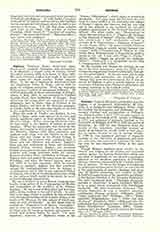

Zeugma, a titular see of Syria, suffragan of Hierapolis, in the Province of the Euphratensis. The city is often called Zeuma (see the texts in Geizer’s ed. of “Georgii Cyprii Descriptio Orbis Romani”, 149). A bridge uniting the two banks of the Euphrates suggested the name, the Greek word meaning “a yoke”. Pliny (Hist. Nat., XXXIV, 150) says that Alexander the Great was the first to build a bridge at this point, no doubt a pontoon bridge. Seleucus Nicator repaired it (Pliny, op. cit., V, 86). The Parthians were accustomed to cross the river at this place (Dio Cassius, XLIX, 19), it being the easiest crossing (Tacitus, “Annals”, 12). Cassius camped here in his campaign against the Parthians during the reign of Claudius. In early times two distinct cities, Seleucia and Apamea, had each its opposite bank of the river (Pliny, op. cit., V, 86, 119; “Corp. Inscr. Grsec.”, 2548). It became customary to say that both cities were on the passage of the “Zeugma”, and from the first century of our era this name was in current use. Procopius (De Aedificiis, II, 9) says that Justinian built a wall about the city and strongly fortified it. The “Notitia Episcopatuum” of Antioch (sixth century; see “Ethos d’Orient”, X, 145), mentions Zeugma among the suffragans of Hierapolis. Le Quien (Oriens Christ., II, 941-44) mentions several of its bishops: Bassus at Nicaed (325); Antonius, an Arian, present at the Council of Philippopolis (344); Sabinianus (363); Aphthonius, at first abbot of a local monastery, later bishop; Heliades, at Ephesus (431); Evorcius at Chalcedon (451); Julian (553). Theodoret (“Hist. Relig.”, V; P.G., LXXXII, 1352-57) deals at length with St. Publius, a monk of Zeugma, and with his monastery. The site of Zeugma has not yet been found; doubtless it is near Biredjik, and facing that place.
S. VAILH

